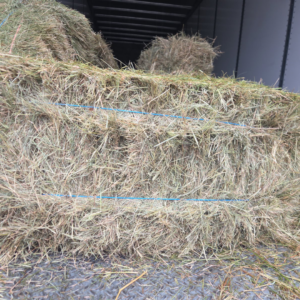 Happy New Year! Now that we’re in the first month of 2026, you may be wondering “Is Hay Still Available in Georgia in January?”
Happy New Year! Now that we’re in the first month of 2026, you may be wondering “Is Hay Still Available in Georgia in January?”
January in Georgia brings a distinct chill to the air, and with it, a new set of considerations for livestock owners and farmers. The once-plentiful fields of summer are dormant, and the focus shifts from harvesting hay to managing the supply you have. This time of year often raises many questions about hay availability, quality, and how to best care for animals through the coldest part of the year.
This guide will address the most common January hay questions in Georgia. We’ll cover everything from finding hay mid-winter to ensuring your current supply stays in top condition. By understanding the unique challenges of this month, you can confidently manage your livestock’s nutritional needs until spring arrives.
Is Hay Still Available in Georgia in January?
This is one of the most frequent questions, and the answer is: yes, but with some caveats. While hay harvesting has long since ended, we still have high-quality hay at J & J Hay Farms. However, the dynamics of buying hay change significantly in the winter.
By January, supplies have often been picked over. The highest quality hay from the previous season is typically the first to sell. This means you might have to search a bit harder or be less selective about the type of hay you purchase. It’s also a time when demand can be high, especially if a particularly cold snap increases the feeding needs of livestock across the state.
Finding hay may require contacting suppliers you haven’t used before or checking local agricultural boards and online marketplaces more frequently. Prices can also be higher than they were in the summer and fall due to the principles of supply and demand.
How Do I Check My Hay Quality Mid-Winter?
The hay you bought in September might not be the same quality by the time January rolls around. Proper storage is crucial, but it’s still wise to inspect your bales before feeding them to your animals.
- Look for Mold: The biggest enemy of stored hay, especially in Georgia’s humid climate, is mold. Break open a bale and look for white, grey, or black dusty spots. A musty or sour smell is another clear indicator of mold. Do not feed moldy hay to your livestock, particularly horses, as it can cause serious respiratory and digestive issues.
- Check for Dust and Debris: Excessive dust can signal poor quality or the beginning of spoilage. Also, check for any foreign objects, weeds, or dirt that may have been baled with the hay.
- Assess Color and Texture: Good quality hay, even after months of storage, should retain some of its color—usually a pale green to yellowish-green. Hay that is brown or overly bleached has likely lost significant nutritional value due to sun exposure or rain damage. It should feel pliable, not overly brittle or damp.
What Are the Best Winter Hay Storage Tips?
Protecting your investment is paramount. How you store your hay directly impacts its quality and longevity through the winter. If you’re noticing issues with your supply, it might be time to re-evaluate your storage methods.
- Elevate Your Bales: Never store hay directly on the ground. Moisture from the earth will seep into the bottom layer of bales, causing spoilage and waste. Use pallets, gravel, or even old tires to create a barrier between the hay and the ground.
- Ensure Proper Ventilation: Airflow is critical for preventing moisture buildup and mold growth. When stacking hay inside a barn, leave space between the rows and between the hay and the walls. This allows air to circulate freely.
- Cover It Correctly: A solid roof is the best protection. If you must store hay outside, use a high-quality, waterproof tarp. Secure it tightly to prevent wind from getting underneath and to ensure water runs off and away from the stack. Avoid covering the sides completely, as this can trap moisture.
How Should I Adjust Feeding for Livestock in January?
Cold weather changes everything for an animal’s dietary needs. They burn more calories just to stay warm, and hay is the primary fuel source to meet this increased energy demand.
- Increase the Quantity: As temperatures drop, your livestock’s energy requirements go up. A good rule of thumb is to increase their hay ration to ensure they have enough fuel to maintain their body temperature. For horses, this often means providing free-choice access to hay.
- Focus on Forage: The process of digesting forage (hay) creates heat in an animal’s body through fermentation in the hindgut. This internal furnace is a powerful tool for staying warm. Providing plenty of good-quality hay is more effective at keeping an animal warm than feeding more grain.
- Ensure Access to Water: Don’t forget water! Livestock need adequate water intake to properly digest hay. In January, this means regularly checking and breaking ice in troughs. Dehydrated animals may not eat enough, putting them at risk in cold weather. Heated water buckets or tank de-icers can be invaluable investments.
Planning Ahead for Your Hay Needs
January serves as a critical checkpoint for your winter hay supply. Take stock of what you have left and calculate if it will last until the first pastures green up in the spring, which can be as late as April in some parts of Georgia.
If your inventory looks low, start searching for additional hay now. Don’t wait until you’re down to your last few bales. Reaching out to local farmers, even if they are sold out, can be helpful. They may know of other producers who still have hay for sale.
Use this time to plan for the upcoming year. Consider how much hay you used, what quality you needed, and where you sourced it from. Building a strong relationship with a reliable Georgia hay producer is the best way to ensure you have a consistent and high-quality supply for every season.

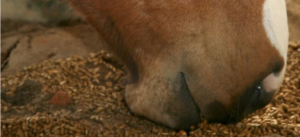 Strategies for Increasing Appetite and Tempting Picky Eaters: Many factors and situations may reduce a horse’s appetite. It’s important to find and correct whatever it is—illness, pain, discomfort, environment—that keeps a horse from diving eagerly into his feed. As the situation is being corrected, owners can try some of the following strategies to encourage a more healthy appetite.
Strategies for Increasing Appetite and Tempting Picky Eaters: Many factors and situations may reduce a horse’s appetite. It’s important to find and correct whatever it is—illness, pain, discomfort, environment—that keeps a horse from diving eagerly into his feed. As the situation is being corrected, owners can try some of the following strategies to encourage a more healthy appetite.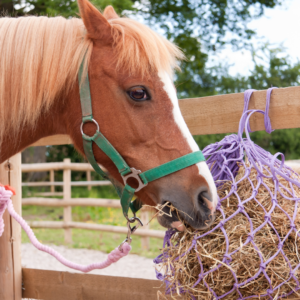 Advantages of Haynets and Hay Feeders for Horses: While forage is the most important part of a horse’s diet, circumstances arise when intake should be limited. Obese horses and ponies with metabolic conditions, for example, may need to have calorie intake controlled carefully to avoid overconsumption of energy. Limiting forage intake can mean less time spent chewing, and with this comes a reduction in saliva production and stomach-acid buffering, all of which sets the stage for gastric ulcers and possible colic.
Advantages of Haynets and Hay Feeders for Horses: While forage is the most important part of a horse’s diet, circumstances arise when intake should be limited. Obese horses and ponies with metabolic conditions, for example, may need to have calorie intake controlled carefully to avoid overconsumption of energy. Limiting forage intake can mean less time spent chewing, and with this comes a reduction in saliva production and stomach-acid buffering, all of which sets the stage for gastric ulcers and possible colic.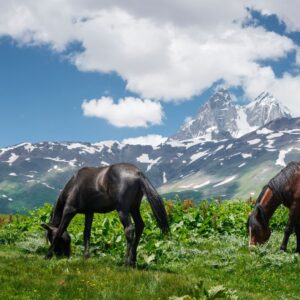 Feeding and Caring for Horses During Cold Weather: Healthy horses usually get along fine in moderately cold weather. A little more care may be necessary for very young or very old equines. In addition, those that are ill or have any sort of chronic health challenge. In extremely cold, wet, or windy weather, almost all horses will benefit from a few adjustments to management.
Feeding and Caring for Horses During Cold Weather: Healthy horses usually get along fine in moderately cold weather. A little more care may be necessary for very young or very old equines. In addition, those that are ill or have any sort of chronic health challenge. In extremely cold, wet, or windy weather, almost all horses will benefit from a few adjustments to management.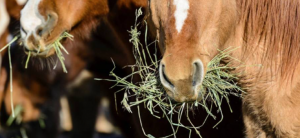 Avoiding Colic as Horses Transition from Pasture to Hay: It happens every year. Horses that have been turned out in pastures all summer must transition to a diet that contains far less fresh grass and far more hay. This means that the important fiber portion of the diet will have a lower moisture content along with a significant increase in the percentage of dry matter. Read further to learn how to avoid colic as horses transition from pasture to hay.
Avoiding Colic as Horses Transition from Pasture to Hay: It happens every year. Horses that have been turned out in pastures all summer must transition to a diet that contains far less fresh grass and far more hay. This means that the important fiber portion of the diet will have a lower moisture content along with a significant increase in the percentage of dry matter. Read further to learn how to avoid colic as horses transition from pasture to hay.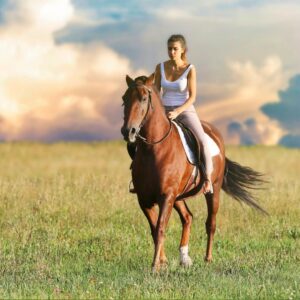 Balancing Equine Diets: The Vitamin A and E Connection. Proper nutrition is at the heart of horse care, and ensuring your horse receives the right balance of vitamins and minerals is critical for their health and performance. Among the essential nutrients, vitamins A and E play a pivotal role in maintaining overall well-being. However, because horses cannot produce these vital vitamins on their own, they rely entirely on their diet to meet their needs.
Balancing Equine Diets: The Vitamin A and E Connection. Proper nutrition is at the heart of horse care, and ensuring your horse receives the right balance of vitamins and minerals is critical for their health and performance. Among the essential nutrients, vitamins A and E play a pivotal role in maintaining overall well-being. However, because horses cannot produce these vital vitamins on their own, they rely entirely on their diet to meet their needs.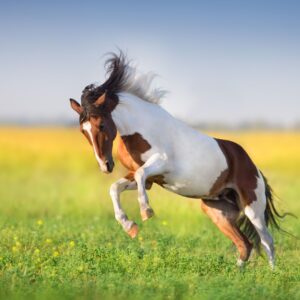 Keeping Your Horses Healthy This Summer: Georgia summers bring soaring temperatures, intense humidity, and long days of sunshine—perfect for outdoor adventures but challenging for horse owners who want to keep their equine companions healthy and comfortable. Whether you’re an experienced equestrian or a first-time horse owner, hot weather care is critical for your horse’s overall well-being.
Keeping Your Horses Healthy This Summer: Georgia summers bring soaring temperatures, intense humidity, and long days of sunshine—perfect for outdoor adventures but challenging for horse owners who want to keep their equine companions healthy and comfortable. Whether you’re an experienced equestrian or a first-time horse owner, hot weather care is critical for your horse’s overall well-being.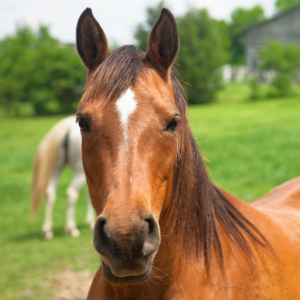 Gastric Ulcers in Horses: Facts and Fallacies. A recent web-based survey queried horse owners on their knowledge and familiarity with equine gastric ulcer syndrome (EGUS). Based on over 1,100 responses from individuals with and without direct experience with EGUS, here is a summary of what horse owners know, and perhaps more importantly, don’t know about gastric ulcers in horses.
Gastric Ulcers in Horses: Facts and Fallacies. A recent web-based survey queried horse owners on their knowledge and familiarity with equine gastric ulcer syndrome (EGUS). Based on over 1,100 responses from individuals with and without direct experience with EGUS, here is a summary of what horse owners know, and perhaps more importantly, don’t know about gastric ulcers in horses.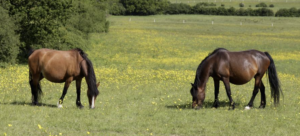 Summer Pasture-Associated Heaves: Most horse owners have heard of heaves. It’s an asthma-like condition caused by irritation of the respiratory system when dust and mold spores are inhaled. Heaves is most often found in horses that spend a lot of time in stalls. They come in contact with fine particles contained in hay.
Summer Pasture-Associated Heaves: Most horse owners have heard of heaves. It’s an asthma-like condition caused by irritation of the respiratory system when dust and mold spores are inhaled. Heaves is most often found in horses that spend a lot of time in stalls. They come in contact with fine particles contained in hay.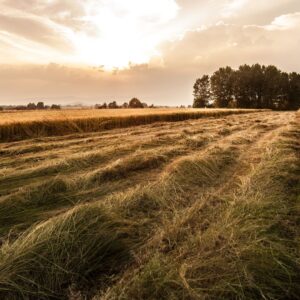 The Most Profitable Summer Hay Crops in Georgia: Our warm summers and fertile soil make it an ideal location to grow a variety of hay crops. For farmers and agricultural enthusiasts, choosing the right forage during the summer can mean the difference between a good growing season and a truly profitable one.
The Most Profitable Summer Hay Crops in Georgia: Our warm summers and fertile soil make it an ideal location to grow a variety of hay crops. For farmers and agricultural enthusiasts, choosing the right forage during the summer can mean the difference between a good growing season and a truly profitable one.